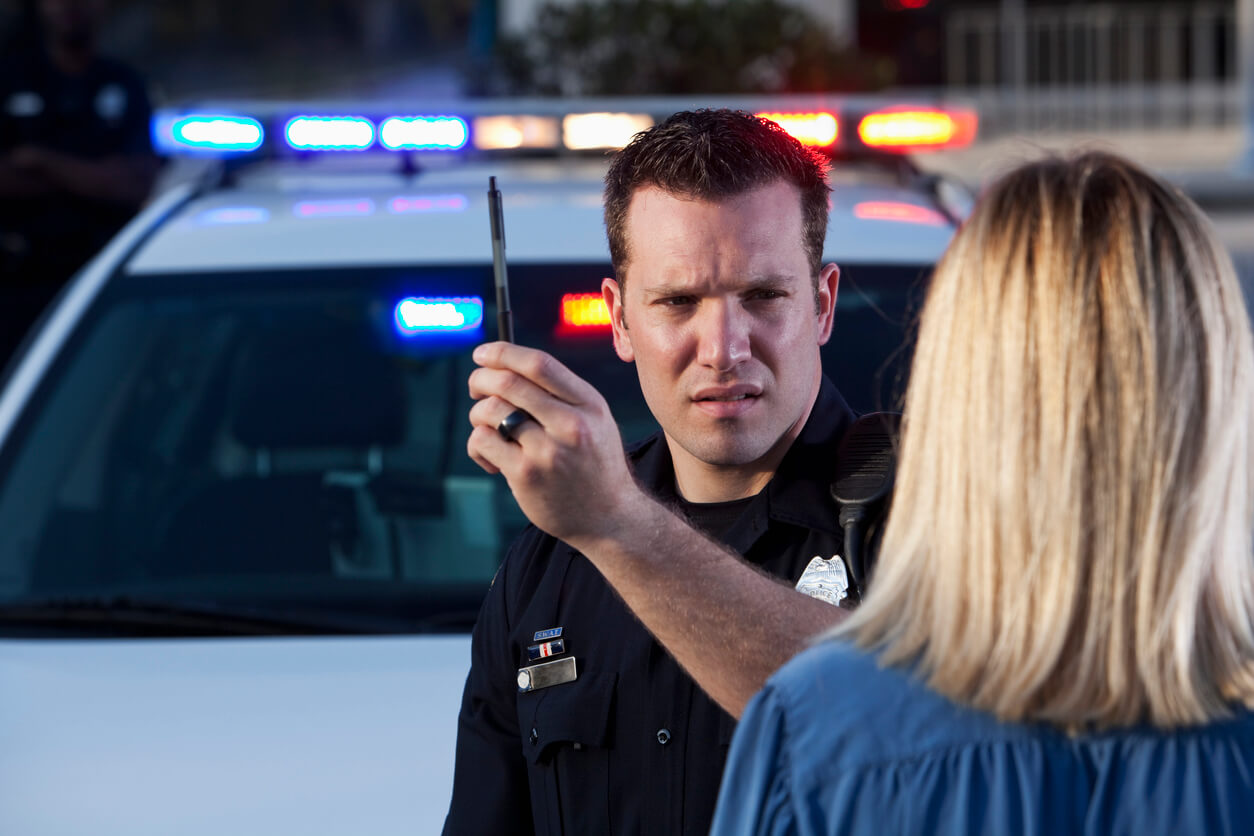New York saw 5,857 people injured in alcohol-related crashes in 2016 alone. Needless to say, the state takes Driving While Intoxicated (DWI) cases very seriously and the sentence for those convicted often reflects this. If you are facing a DWI charge, you may have been subjected to a standardized DWI field sobriety test. These tests were developed by the National Highway Traffic Safety Administration (NHTSA) back in the 1970s and are used to help law enforcement determine whether a driver has been operating his or her vehicle while intoxicated.
What Are the Standardized DWI Field Sobriety Tests in New York?
There are three separate standardized field sobriety tests (SFST’s) that are used in New York. Law enforcement officers are required to participate in 24 hours of training prior to becoming certified to perform standardized field sobriety tests during stops that have occurred due to DWI suspicion. The three tests are:
- Horizontal Gaze Nystagmus
- Walk and turn
- One-leg stand
With the horizontal gaze nystagmus test, the police officer observes the eye reactions of the suspect. Nystagmus refers to the involuntary rapid movement and/or jerking of a person’s eye does when subject to a stimulus. The jerking is likely to increase when there is alcohol present in an individual’s bloodstream. The suspect will be directed to remove their glasses if wearing them, feet together, hands at sides, and keep the head still while looking at and tracking a stimulus with the eyes only. Usually, a finger or a pen is used as the stimulus and is kept approximately 12 inches from the person’s nose. The person must follow the finger or pen’s movements with the eyes only; no turning of the head. The horizontal gaze nystagmus test is said to be the most reliable of the standardized DWI field sobriety tests. It is important when building a defense, to note that some people have natural eye nystagmus when sober.
The walk and turn tests require the test subject to take 9 heel-to-toe steps across a line in one direction and back. The person should be instructed to keep his or her eyes on the feet and count each step out loud. Arms should be kept at the sides. The police officer will look to see if the person is having difficulty staying balanced or following any of the instructions as an indication that the individual is, in fact, intoxicated.
With the one-leg stand test, the person will lift one leg slightly off the ground, about six inches, and stand on the other leg. The raised foot should be pointed out and both legs should be straight with the individual looking down at the raised foot. The officer will be looking for several things that may indicate the individual is intoxicated. The person may be swaying while trying to balance. He or she may be using arms to balance or need to put the foot down. Hopping is also a potential indication of intoxication.
Trust DWI Defense Counsel
The accuracy of field sobriety tests can be challenged on many levels as can other evidence that may have been gathered in order to charge and convict you of a DWI. Heiferman & Associates is here to challenge this evidence and work to prevent a DWI charge from becoming a DWI conviction. Contact us today.

